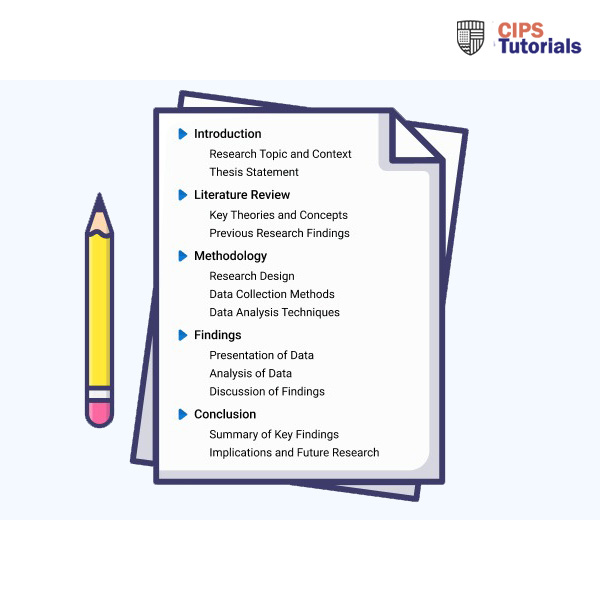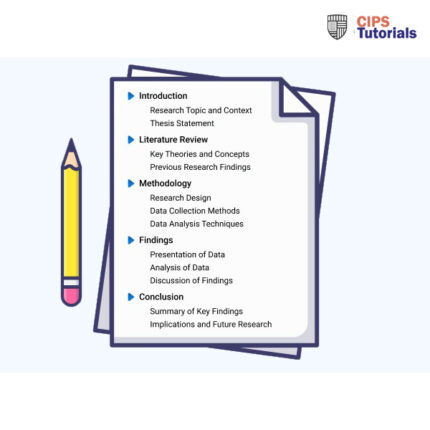-67%
Solution
Section one – Questions
| Analyse the external factors that drive the need for leadership and management within the organisation (AC 1.1)
Short references should be added into your narrative below. Please remember to only list your long references in the reference box provided at the end of this section. Word count: Approximately 450 words |
| Leadership and management are paramount in modern-day organisations as they play pivotal roles in steering the company towards its objectives, fostering innovation, and ensuring operational efficiency. Effective leadership inspires and motivates employees, fosters a positive organisational culture, and facilitates adaptability in dynamic business environments (Mackenzie, 2023). Management, on the other hand, ensures that resources are allocated efficiently, processes are streamlined, and goals are achieved.
PESTLE analysis is a strategic tool used by organisations to assess the external factors affecting their operations and decision-making processes, as stated by CIPD (2023). By systematically analysing these factors, organisations like Highgate Opticals can gain insights into the external forces shaping their industry and develop proactive strategies to navigate challenges and capitalise on opportunities. The factors include; Changing demographics: The changing demographic landscape presents both opportunities and challenges for organisations like Highgate Opticals. With a workforce comprising individuals from diverse backgrounds, there’s a rich pool of talent and perspectives to draw from, fostering innovation and creativity. However, managing a diverse workforce requires a nuanced approach to leadership and management. By embracing diversity, Highgate Opticals can enhance employee engagement, improve decision-making processes, and gain a competitive edge in the market. Sustainability and Responsible Business Practices: In an era of heightened environmental awareness, sustainability has become a key priority for businesses worldwide, including Highgate Opticals. Adopting responsible business practices not only aligns with ethical values but also has tangible benefits for the company. By reducing its carbon footprint, minimising waste, and sourcing ethically produced materials, Highgate Opticals can enhance its brand reputation, attract environmentally-conscious consumers, and drive long-term profitability. Embracing sustainability requires leadership commitment, investment in eco-friendly technologies, and collaboration across the supply chain to ensure a holistic approach to environmental stewardship. Digital and technological changes: Rapid technological advancements present both opportunities for innovation and challenges for adaptation (Lescrauwaet et al., 2022). For Highgate Opticals, staying ahead of the curve in terms of technology adoption is essential to remain competitive in the market. Embracing digital tools and automation can streamline manufacturing processes, enhance product customisation, and improve customer experiences. However, technological advancements also bring cybersecurity risks, the need for continuous upskilling of employees, and potential disruptions to traditional business models. Leaders must foster a culture of technological agility, encourage experimentation, and invest in employee training to harness the full potential of emerging technologies while mitigating associated risks.
|
| Explain the key differences between leadership and management roles and styles and the implications of each for organisational effectiveness. (AC 1.2)
Short references should be added into your narrative below. Please remember to only list your long references in the reference box provided at the end of this section. Word count: Approximately 500 words |
| Leadership and Management Roles
Management as Authority and Control– According to Al Aina & Atan (2020), Managers typically focus on operational tasks, implementing strategies, and ensuring day-to-day tasks are completed efficiently. They exercise authority and control over their teams, making decisions, setting goals, and allocating resources. Managers are responsible for supervising and coordinating the work of their team members to achieve organisational objectives(CIPD, 2020C). Impact: Managers in charge of operations have a great deal of power since they ensure consistency in production and quality (CIPD, 2022). In order to ensure that customers receive their eyeglasses on schedule, the managers at Highgate Optical establish production goals, distribute resources effectively, and keep tabs on the manufacturing team Leadership as Vision and Influence– Leaders, on the other hand, inspire and motivate their followers towards a shared vision or goal. They provide direction, guidance, and support to their team members, fostering innovation, creativity, and collaboration. Leaders influence others through their vision, values, and interpersonal skills rather than relying solely on formal authority. Impact: Innovative managers work well with this kind of leadership. As an example, the CEO of Highgate Optical aspires to be the undisputed global leader in optical innovation. In order to come up with new and exciting eyeglasses, they push their advertising, marketing, and design teams to think creatively and put customer needs first. Key differences between these roles include: Authority and Control vs. Vision and Influence: Managers primarily rely on their positional authority to direct and control their team members, while leaders inspire and influence others through their vision and charisma. Managers and Team Members vs. Leaders and Followers: Managers typically have subordinates whom they supervise and manage, whereas leaders have followers who voluntarily choose to align with their vision and values. Leadership and management styles: Transformational Leadership: Transformational leaders inspire and motivate their followers by articulating a compelling vision, setting high expectations, and challenging the status quo (Gonfa, 2019). They empower their team members, encourage innovation, and foster a culture of growth and development. Transformational leaders lead by example, earning the trust and loyalty of their followers through their charisma and passion. Impacts: Transformational leadership can have a profound impact on organisational effectiveness. By inspiring and motivating followers, transformational leaders foster a sense of purpose and commitment among team members. Situational Leadership: Situational leaders adapt their leadership style based on the specific needs and readiness levels of their followers. They assess individual and situational factors to determine the most appropriate approach, whether it be directing, coaching, supporting, or delegating. Situational leaders provide the right level of support and guidance to help their followers achieve their goals and maximise their potential. Impacts: Situational leadership enables leaders to adapt their approach to meet the specific needs and readiness levels of their followers, resulting in more effective leadership outcomes. By assessing individual capabilities and situational factors, situational leaders can provide the right level of support and guidance to help their followers succeed (Arisman et al.,2021). Key differences between these styles include:
|
| Compare the different knowledge, skills and behaviours required for leadership and management in organisations. (AC 1.3)
Short references should be added into your narrative below. Please remember to only list your long references in the reference box provided at the end of this section. Word count: Approximately 400 words |
| Knowledge of leadership and Management
Leadership: Morality in Ethics: Effective leadership demands a thorough comprehension of ethical ideas. Leaders must possess a firm grasp of utilitarianism and deontology because they provide guidance for decision-making and uphold organisational ideals. (Letwin and others, 2015) Management: Scheme Management: Project management practices are essential for managers to plan, execute, and oversee projects successfully. Project Management Institute (PMI) frameworks, such as the Project Management Body of Knowledge (PMBOK), boost the probability of a project’s success (Sankaran, Jacobsson and Blomquist, 2021). Comparison: While a strong groundwork is essential for both management and leadership, the two fields focus on distinct aspects of an organisation. Leadership is focused on ethical knowledge, which helps leaders make decisions based on values, whereas management is oriented on project management expertise to enhance operational efficiency. Skills for Leadership and Management: Leadership: Cognitive Thinking: The ability to think critically is a must-have for leaders. It is necessary to analyse complex situations and take into account many perspectives in order to make educated decisions (CIPD, 2019). A leader’s moral compass should guide their critical thinking when making decisions. Management: Time Management: Strong time management abilities are essential for effective administration. Prioritisation, efficient resource allocation, and meeting deadlines are all part of it. Management must distribute funds equitably if they want to adhere to justice’s ethical principles (Oreopoulos et al., 2022). Comparison: Possessing strong time management and analytical thinking skills is essential for managerial and leadership roles. However, their applications and associated ethical concerns differ. Leadership is centred around making decisions, whereas management is more concerned with allocating resources while considering ethical standards. Behaviors for Leadership and Management: Leadership: Motivation: As a leader, you must be able to inspire your team. To achieve their goals and reach their maximum potential, teams need leaders who can motivate them. Inspiring leaders, from a moral standpoint, foster an upright atmosphere and encourage moral behaviour. Management: Entrustment: Managers often rely on their ability to entrust others when delegating duties and obligations to their teams. Helping employees with their personal and professional growth should go hand in hand with delegation, according to ethics.
Comparison: Leadership and management are similar in that they both need to do what’s best for the team members. The entrustment attitude of management should be consistent with ethical norms and consider the growth and welfare of employees, whereas the focus of motivational leadership is on inspiring and promoting ethical behaviour among employees.
|
| Evaluate the different concepts and range of approaches that are available for effective leadership and management development. (AC 2.2)
Short references should be added into your narrative below. Please remember to only list your long references in the reference box provided at the end of this section. Word count: Approximately 450 words |
| Approaches for Fostering Future Leaders and Managers
Qualification-Based Approach vs. Non-Qualification Approach There are benefits and drawbacks to both the qualification-based and non-qualification approaches to managing and leading people. The Qualification-Based Approach places a premium on credentials earned from recognised educational institutions. Although it is costly and time-consuming, this method provides pupils with a solid theoretical foundation. Another possible participant complaint is that the method is very theoretical and not applicable to practical leadership and management situations (Young, 2004). Non-Qualification Approach, which stands in stark contrast. This approach prioritises functionality and flexibility. Participants in programmes that provide mentorship and practical training can put their new skills to work in their careers right away. It is challenging to assess the effectiveness of informal learning without the well-established assessment procedures seen in formal education. (Young, 2004). Formal Approach vs. Informal Approach A new angle is offered by drawing a line between the two main methods of training managers and leaders: the formal and informal approaches. Classroom instruction, organised training sessions, and similar methods make up the Formal Approach. This approach provides a structured framework for learning with observable results. Conversely, the Informal Approach stresses the importance of mentorship, peer collaboration, and learning on the job. Participants are given the opportunity to personalise their learning experiences while the course emphasises practical application and flexibility. Some problems may arise, nevertheless, due to the subjective character of evaluating its efficacy and the absence of a defined curriculum (CIPD, n.d.). On-the-Job Learning Approach vs. Off-the-Job Learning Approach Assessing the merits of both the On-the-Job Learning and Off-the-Job Learning approaches can improve management and leadership training. The term “on-the-job learning” refers to the process of acquiring new knowledge and skills even as one works. Skills are honed and put to use via this practical training. To avoid learning mistakes and maintain a healthy work-life balance, participants may require assistance (Liu, 2020). Conferences, workshops, and other forms of external training are examples of Off-the-Job Learning. New ideas and professional networks are promoted as a means of diverse learning. The downsides of external programmes are that they are expensive and take time away from work (Liu, 2020). Recommendation For Highgate Opticals, prioritising a combination of the non-qualification approach and the on-the-job learning approach would be the most appropriate strategy for fostering future leaders and managers. In an industry where practical skills and adaptability are paramount, emphasising mentoring, on-the-job training, and practical learning aligns closely with the company’s needs.
|
| Discuss why diversity and inclusion should be an integral component of leadership and management development initiatives. (AC 2.3)
Short references should be added into your narrative below. Please remember to only list your long references in the reference box provided at the end of this section. Word count: Approximately 360 words |
Please click the following icon to access this assessment in full

